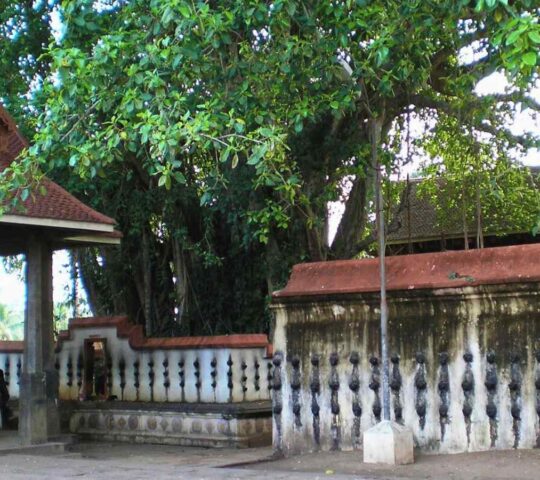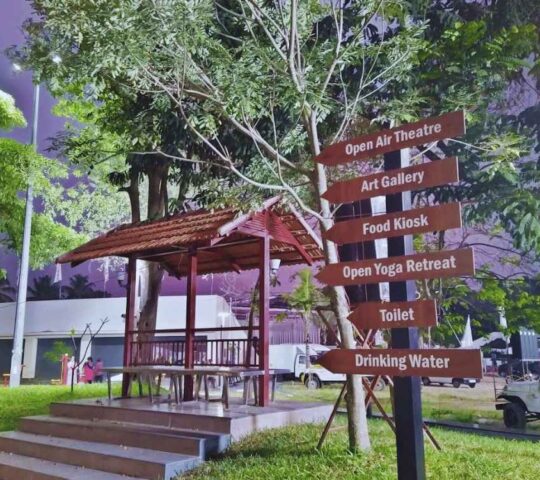Padmanabhapuram Palace
Hightlight
-
 Car parking
Car parking
-
 Non smoking
Non smoking
Nestled 62 kilometers from Thiruvananthapuram, Padmanabhapuram Palace stands as a remarkable testament to Kerala’s architectural heritage. This wooden palace, spanning 6.5 acres, is a masterpiece dating back to 1601 C.E., making it the largest of its kind in Asia. The palace’s intricate woodwork, with floral carvings and black granite floors, showcases the craftsmanship of ancient artisans. Situated in the serene foothills of the Western Ghats, the complex is encircled by a stone fortification with a moat and a principal gateway on its western face.
Timeless Architecture and Cultural Legacy of Padmanabhapuram Palace
Constructed using indigenous materials like stone, laterite, and timber, Padmanabhapuram Palace boasts polished lime-mixed floors that gleam like mirrors. Timber is prominently featured in the walls, roof frames, pillars, and beams, reflecting local craftsmanship. The palace’s design, adapted to Kerala’s humid tropical climate, incorporates internal courtyards to enhance ventilation and serve as central hubs for daily life. Interconnected buildings feature covered corridors and overhead walkways, facilitating easy movement between different sections of the palace.
Historically, Padmanabhapuram Palace holds profound significance. It was originally built in 1601 C.E. by Iravi Varma Kulasekhara Perumal, the ruler of Venad, and later reconstructed in 1750 by King Marthanda Varma, a pivotal figure in the modernization of Travancore. The palace comprises unique rooms such as the Mantrasala (King’s Council Chamber), Thai Kottaram (Southern Palace), Nataksala (Performance Hall), and Indira Vilasom (Guest House). The Central Mansion houses the royal treasury, king’s bedrooms with herbal wood bedsteads, and murals depicting religious and social scenes. Additionally, the Southern Palace functions as a heritage museum, showcasing antique household items and cultural artifacts.
Padmanabhapuram Palace offers visitors a glimpse into Kerala’s rich architectural and cultural heritage. While reviews highlight both positive and negative aspects of maintenance, visitors appreciate the palace’s historical and cultural significance. To explore this architectural marvel, guests are required to remove footwear and pay a nominal entry fee, with guides available to provide insights into the palace’s history and architectural features.
FAQs
Entry Fee for Padmanabhapuram Palace
The entry fee for Padmanabhapuram Palace is INR 20 per head.
Things to Do at Padmanabhapuram Palace
Visiting Padmanabhapuram Palace is a captivating journey through history and architecture. Explore intricately carved interiors, murals, and unique rooms like the Mantrasala (King’s Council Chamber) and the Southern Palace, which houses a heritage museum.
The Best Time to Visit Padmanabhapuram Palace
The best time to visit Padmanabhapuram Palace is during the cooler months between October and March when the weather is more pleasant for exploring. Avoid the monsoon season from June to September due to heavy rainfall, which may affect your experience. Weekdays are generally less crowded compared to weekends, allowing for a more relaxed visit to appreciate the palace’s beauty and history without large crowds.
How to Reach Padmanabhapuram Palace
To reach Padmanabhapuram Palace, you can travel by road from various parts of Kerala and Tamil Nadu. The palace is located about 62 kilometers from Thiruvananthapuram, and you can hire a taxi or use public buses to get there. If you’re traveling by train, the nearest railway station is at Thiruvananthapuram, and from there, you can take a taxi or bus to reach the palace. The closest airport is Thiruvananthapuram International Airport, approximately 57 kilometers away. From the airport, you can hire a taxi or use public transportation to reach Padmanabhapuram Palace.





